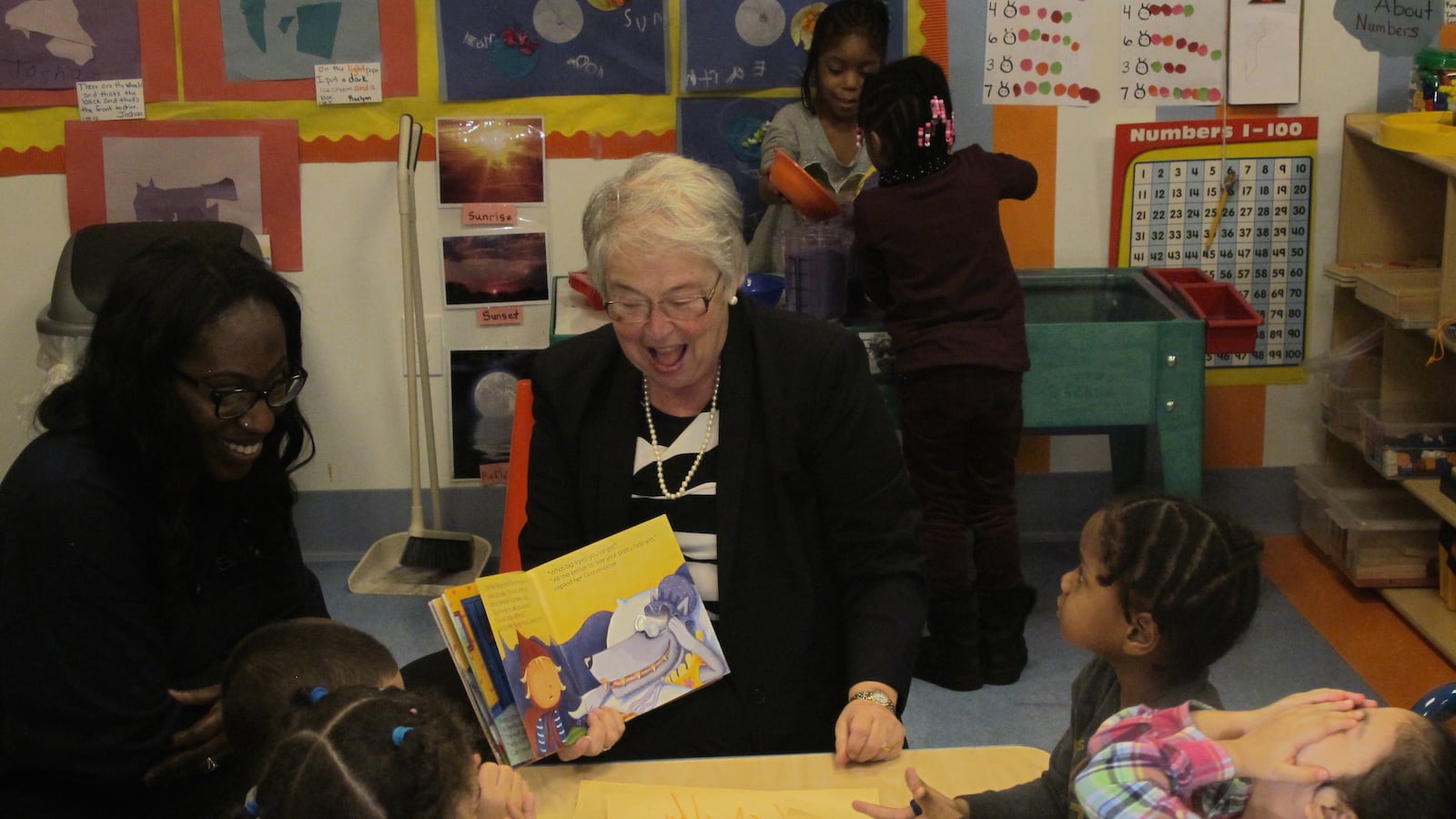Chancellor Carmen Fariña said students were more ready and eager to take on kindergarten after getting a taste of what school would be like in their universal pre-K classes. That’s anecdotal proof, she said, that the city’s ambitious push to make preschool available for all is starting to show results in the classroom.
“You’re finding that the kids are coming to kindergarten almost with a swagger: ‘Oh, I know this building,’” Fariña told Chalkbeat on Wednesday. “That sense of self-confidence starts earlier and allows us — not to do more academics, per se, but to get more engaged in learning in a way that’s meaningful.”
That’s a far cry from Fariña’s experience as a principal at Manhattan’s P.S. 6. “The first month of school in September was horrendous,” she said. “The criers — mostly the parents, not the kids, necessarily — the separation.”
Mayor Bill de Blasio has made free prekindergarten a centerpiece of his education agenda, calling it a way to level the playing field for all students. The program launched in 2014, and the kindergartners who finished their year in June were the first class of students to benefit from expanded access to preschool. Fariña likes what she has seen.
“The anecdotals that we’re getting are the kids are coming to kindergarten with more stamina. Their ability to focus on a read-aloud, for example, is much better than it was,” Fariña said. “They know the school’s rules and regulations, and they’re much more comfortable in moving from one situation to another.”
Fariña said she has asked her staff to take a more empirical look at outcomes for universal pre-K, but the city already has some data points on the quality of its widely touted program.
A New York City Department of Education review of more than 500 school sites found that the vast majority — 77 percent — met international standards for effective programs. A parent survey released in February 2016 also yielded glowing reviews: 63 percent of the parents described their child’s program as “excellent,” and another 29 percent said it was “good.”
Enrollment has climbed from about 50,000 students in 2014-2015 to more than 68,000 last year, the first time there was a spot for everyone who applied. Figures for the 2016-2017 school year aren’t yet available. Department of Education spokeswoman Devora Kaye said the school system is still processing and recruiting applications for this coming year.

